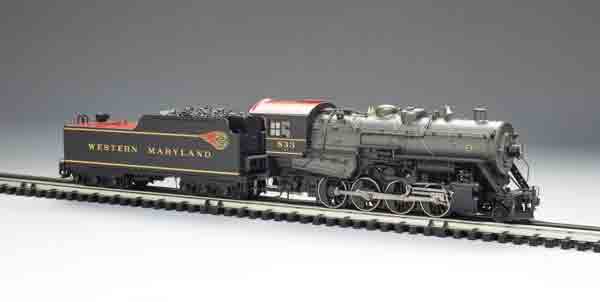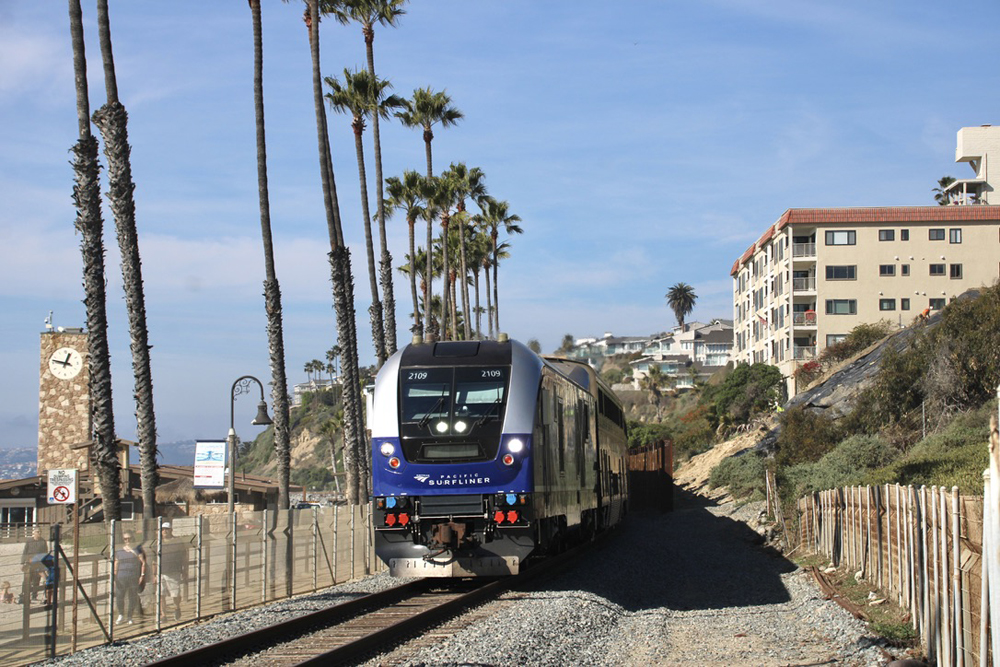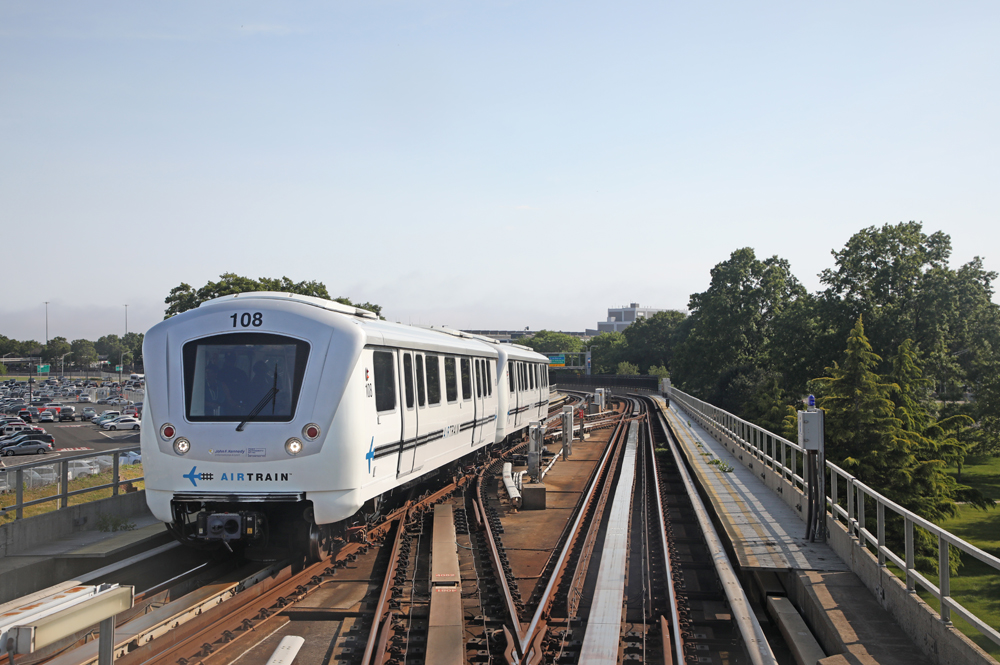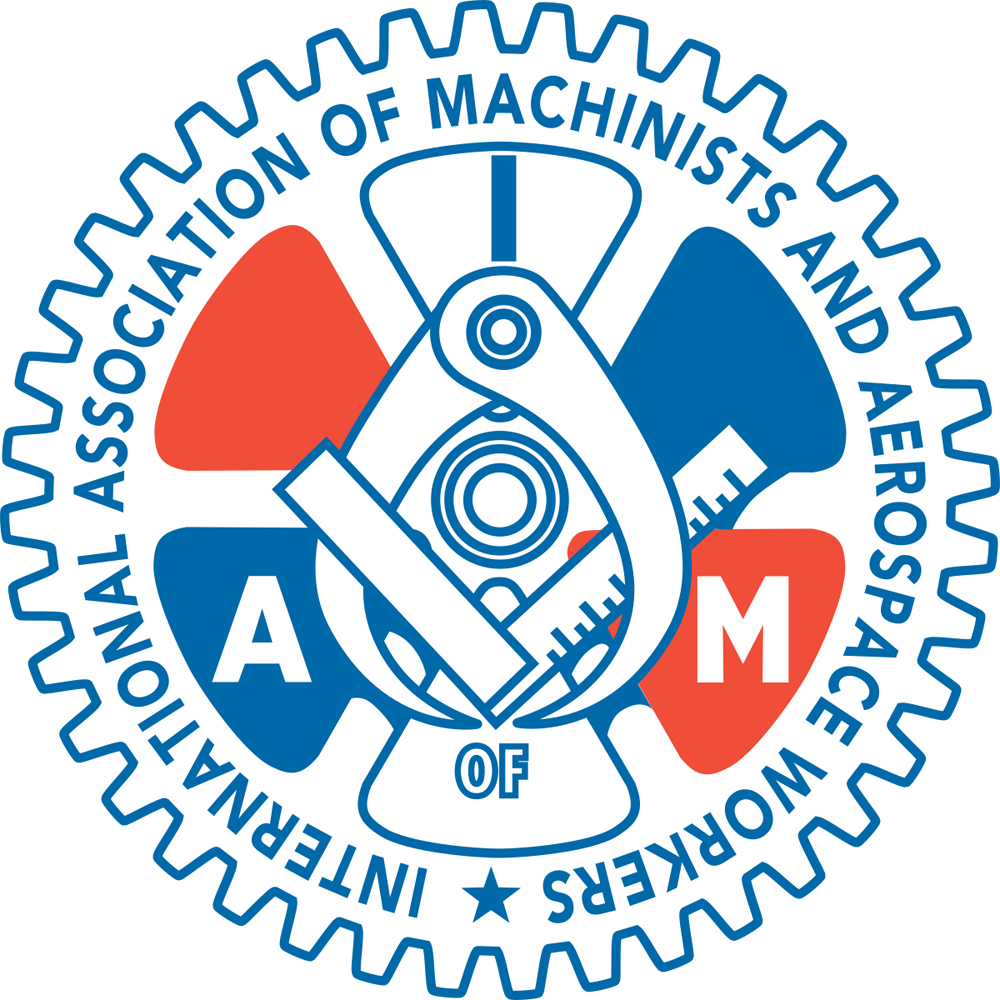Price: $899.95 (no. 20-3550-1) Min Curve: O-42 Cmd Low: 2.9 smph Cnv Low: 3.5 smph High: 42.9 smph Drawbar pull: 2 lb., 6 oz. Features: Can-style motor, ProtoSound 3.0 command and sound system, smoke coil coupler on tender Current production road names: Illinois Central, New York Central System (Pittsburgh & Lake Erie), and Western Maryland (two cab numbers)
The model before us is an O gauge MTH Premier line Western Maryland H-9 class 2-8-0. We at Classic Toy Trains are delighted to begin the year by playing with, oops, I mean testing this release.
Opening the box
The first detail that jumped out at me was the size of the boiler. For a locomotive built to haul coal out of the gullies and over the hills of West Virginia and Maryland, the H-9 needed to generate a lot of steam. Therefore, a boiler as large as this one (in scale) would get the job done. It indirectly explained the large tender, as well – a fair amount of coal and lots of water were necessary to get the job done.
But rest assured, the boiler doesn’t look out of place on the MTH replica. I consider it merely functional and king-size. It is also an excellent canvas for an impressive level of detail, but I get ahead of myself.
The locomotive’s pilot has a nice, angled snowplow affixed to it. You’ll also find two brakeman steps with “Work Safely” printed on them. There is a scale coupler attached to a simulated uncoupler arm, along with a cast-in brake line. On top of the pilot you’ll see some safety texture. There is an air reservoir beneath the smoke box, and a pipe runs from it to the pilot, running to the brake line.
The smokebox has a good level of cast-in rivet and latch detail. There are hinges on the smokebox and hinges attached to the hatch supporting the headlight. The headlight has number boards.
The classification lights are positioned at roughly the 10 and two o’clock positions.
The boiler is generally smooth with cast-in latches along the top as well as boiler bands and rivet detail at the firebox. There is add-on piping and conduits (more on the fireman’s side than the engineer’s side), and red-painted valve handles can be seen throughout. The whistle, pop-off valves, and bell are all gold tone.
There are steps on the boiler sides in several spots for maintenance and service crews to reach the boiler top. The sand dome has four grab irons mounted on it and two clear and distinct sand hatches.There is also a nice lanyard running from the cab to the whistle and then the bell.
The cab is superbly done, with crew figures, cast-in piping and painted gauges and valve handles. The large grate reveals the firebox glow quite nicely.
Below the boiler you’ll find an array of struts, tubing, pipes, and air tanks. The focal point of the steamer – the running gear – is silver tone and stands out neatly against the black backdrop.
An MTH wireless tether connects the locomotive with the tender.
The tender itself is a marvel. It is a 12-wheel rig with well-detailed truck frames. All four corners have grab irons and steps. Along the bottom of the car you’ll find many chains, which can be clearly seen on our prototype photo of Western Maryland no. 803.
The long tender has rivet and seam detailing, as does the top deck. Both the tender deck and the cab roof are painted red. The coal load is chunk-style rather than cast in.
The rear has a simulated uncoupler arm, a coil uncoupler, and a ladder to access the tender deck. Lift the water hatch and you’ll find a manual control for regulating smoke unit output.
On the test track
It isn’t often I’m wowed by how slowly and smoothly a steam locomotive starts to move, but this Consolidation began to move so gracefully I did a double-take. The locomotive immediately negotiated a FasTrack switch like a warm knife through butter. Usually when I test a locomotive it takes at least a few laps around the track to get warmed up, so to speak. Movement of this steamer was sure-footed and consistent in speed from the get-go.
The smoke unit produced a torrent of fog in no time, so I turned down the output. The sync between the chuff sound and the puffs of smoke was very good.
The sound package was outstanding. All the chuffs, clinks, clanks, and assorted background noises gave a good reference to a real locomotive. The whistle and bell were terrific.
Drawbar pull for this hefty steamer was just over two pounds; the engine performed admirably with the assorted cars we coupled behind it.
The locomotive operated smoothly in all speed ranges, and it was a pleasure to watch it running, especially at low speeds (that near-hypnotic side-rod syncopation, don’t you know).
This locomotive was fun to run, operated well with whatever consist we put behind it (even Amfleet cars), and was a good, all ‘round player in the O gauge game. Ergo, a utility infielder. This is one of those models about which I might wistfully muse, “If only they made it in New York Central …” but then I’d brighten up – because they do!














